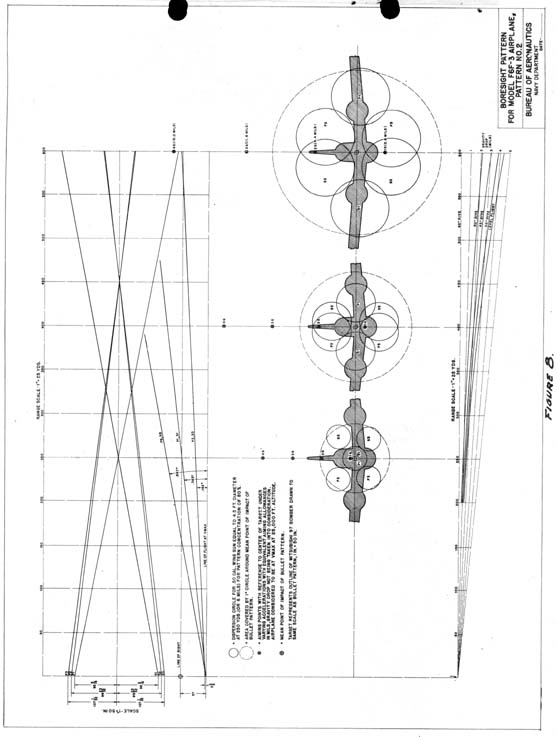
 |
|
|||||||
| IL-2 Sturmovik The famous combat flight simulator. |
 |
|
|
Thread Tools | Display Modes |
|
#1
|
||||
|
||||
|
I would like to know more about the 20mm Hispanos used on American P-38's.
I have never read that there were problems with these weapons on the Lightning. Yet I have also read that Hispanos of American manufacture were unreliable. Can anyone knowlegeable about these weapons comment? Thanks. |
|
#2
|
|||
|
|||
|
I'm not sure. I've not read much about the Hispanos in the P-38. The biggest problem with the cannon was that the initial French design was meant to be hub mounted in the nose of the aircraft carrying the cannon.
As this was impractical for the Merlin and Sabre engines the British never installed the cannon in the way it was meant to be used. Mounting cannons on the wings means that the mechanism is subject to more extreme forces and the flexing and bending of the wing. The early problems were attributable to that and to dirt and dust getting into the mechanism. There may be more issues than that... but that's the simple breakdown. So the British and the Americans worked to fix those problems on the basic design independently. My guess is that the P-38 and P-39 installation in the nose of the aircraft countered the difficulties with installing in the wings. Installing it in wing mounted installations for the Hispano only happened in the F4U-1C.
__________________
Find my missions and much more at Mission4Today.com |
|
#3
|
|||
|
|||
|
All you ever wanted to know about the WWII gun debate right here ....
http://users.skynet.be/Emmanuel.Gust...n/fgun-in.html More here ... http://www.quarry.nildram.co.uk/CannonMGs.htm Note that unreliability in wing mounts was not the only issue. The following factors are also relevant: - everything else in the US armed forces from HMG in rifleman squads through jeeps and tanks to light AAA mounts on boats used 0.50 cal. From a logistics point of view 0.50 cal was easier to supply. - even if 20mm was "better" ... if 0.50 cal was doing the job it was uneconomic just to change weapons at random mid war - multiple 0.50 cal in an aircraft could use a variety of gun harmonization some of which favored less accurate marksman. See the link and diagram below ... http://www.researcheratlarge.com/Air...nBoresighting/ 
Last edited by WTE_Galway; 12-04-2011 at 11:39 PM. |
|
#4
|
|||
|
|||
|
Tony Williams there really knows his stuff. I do give the .50 caliber M2 series more credit than he does though. It worked for what we needed it to do.
Wasn't there a F6F-5 variant that had two 20mm Hispanos and four .50 cals? I think that would be a rather ideal armament for most situations. A bit off-topic but did any P-38 variants with the 37mm cannon see combat? Considering the tally I've gotten in IL2 with the 37mm cannon on the P-39, I'd be interested to learn what pilots and engineers thought of this weapon. |
|
#5
|
|||
|
|||
|
Nightfighter versions sported this fearsome firepower. 250 rpg for cannons is pretty awesome too.
|
|
#6
|
|||
|
|||
|
The inadequacies of 0.50 cal became really clear by Korea.
You only have to compare the effectiveness of the 6 x 0.50 cal in the USAF Sabres with the pair of 30mm Aden (a UK revolver cannon which was a direct copy of the WWII German Mauser MG 213C) which were fitted to the Aussie built CAC Sabres to get the idea. Its actually curious the Germans did not pursue the 20 mm MG213 and 30mm MG213c revolver cannon route during the war as the MG213 was fully developed quite early (circa 1942) and had excellent rate of fire for a 20mm cannon. Quote:
A quick google reveals at least one victory in combat ... Lt. Eliza Shahan of the 27th FS in a P38D shared in the destruction of an Fw200 off the coast of Iceland on August 14th 1942. However it appears that none of the operational P38D were ever actually fitted with the 37mm. Quote:
|
|
#7
|
||||
|
||||
|
Most memoirs of the aerial ops in wwii seem to have been written by pilots or senior officers. I have read many of these and enjoyed them very much. But as an armchair historian, I would also be be very interested in reading the memoirs of maintenance personnel (techs and management) and intelligence types to learn more about real world problems such as this and how they were dealt with behind the scenes.
Pilots were very important people but they were just the tip of a very large spear. Last edited by secretone; 12-07-2011 at 06:11 PM. |
|
#8
|
|||
|
|||
|
Quote:
Plenty of that sort of stuff about .. here is just a few ... http://www.woodfieldpublishing.co.uk...en-uk/d76.html On the subject of the P38 there is also kelly Johnson's biography: 
|
|
#9
|
|||
|
|||
|
Funny, I've never read about any problems with the Hispano in the P-38, but I've read several times about problems with freezing at high altitudes in the Corsairs and the F6F's. I suspect that part of this is due to the much more temperate climate that these birds were flying in late in the war, and also the south pacific air war tended to be fought at lower altitudes.
__________________
I'm pretty much just here for comic relief. Q6600@3.02 GHz, 4gig DDR2, GTX470, Win7 64bit |
 |
|
|